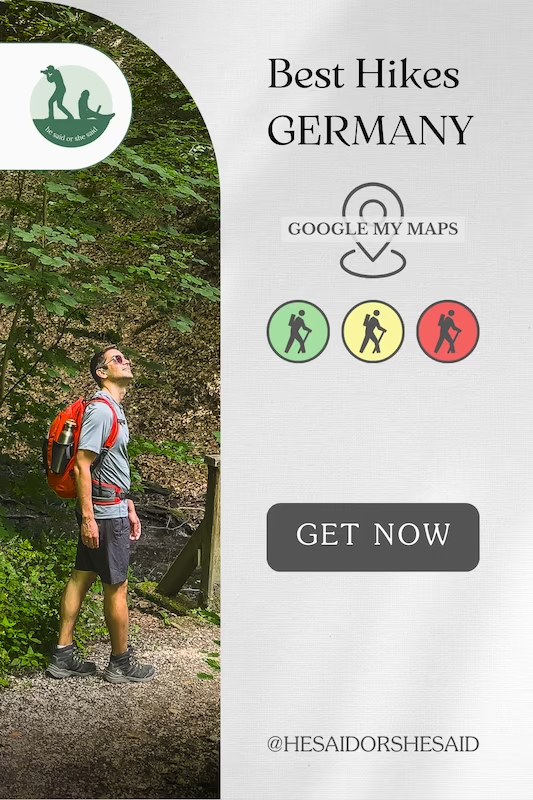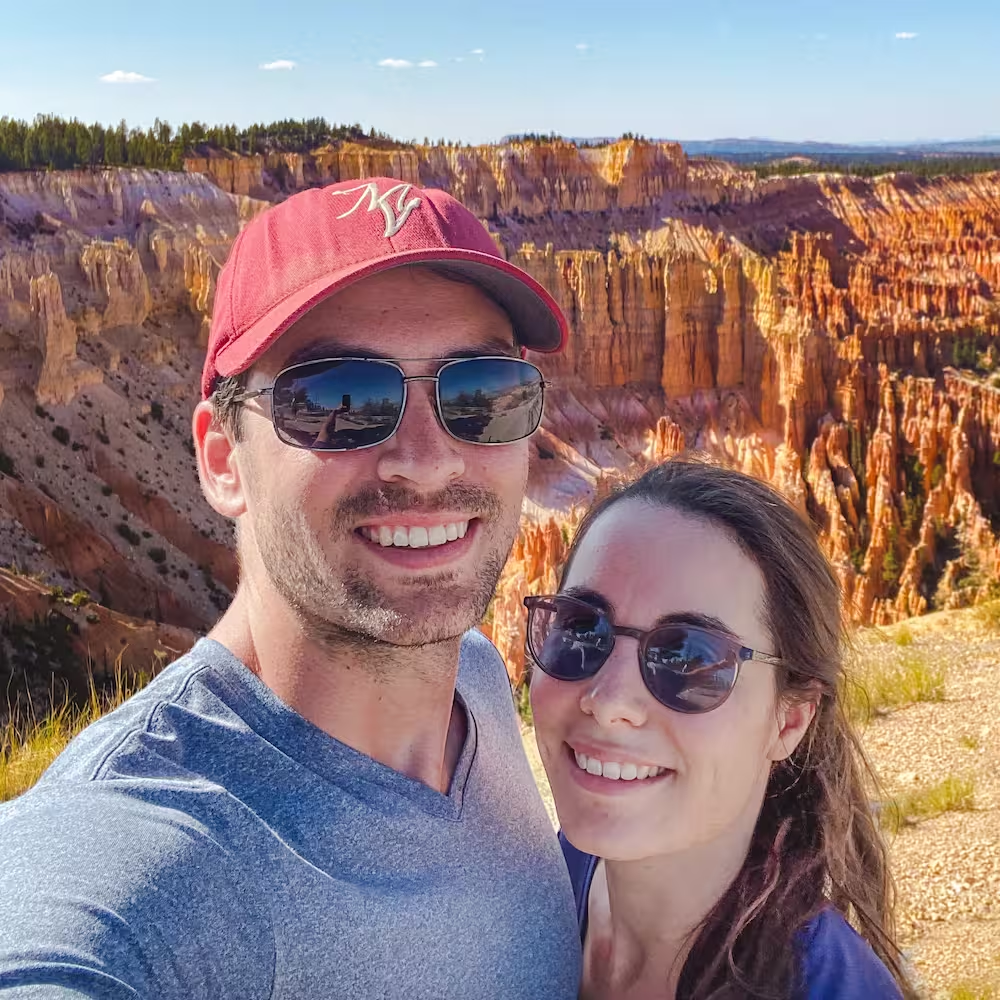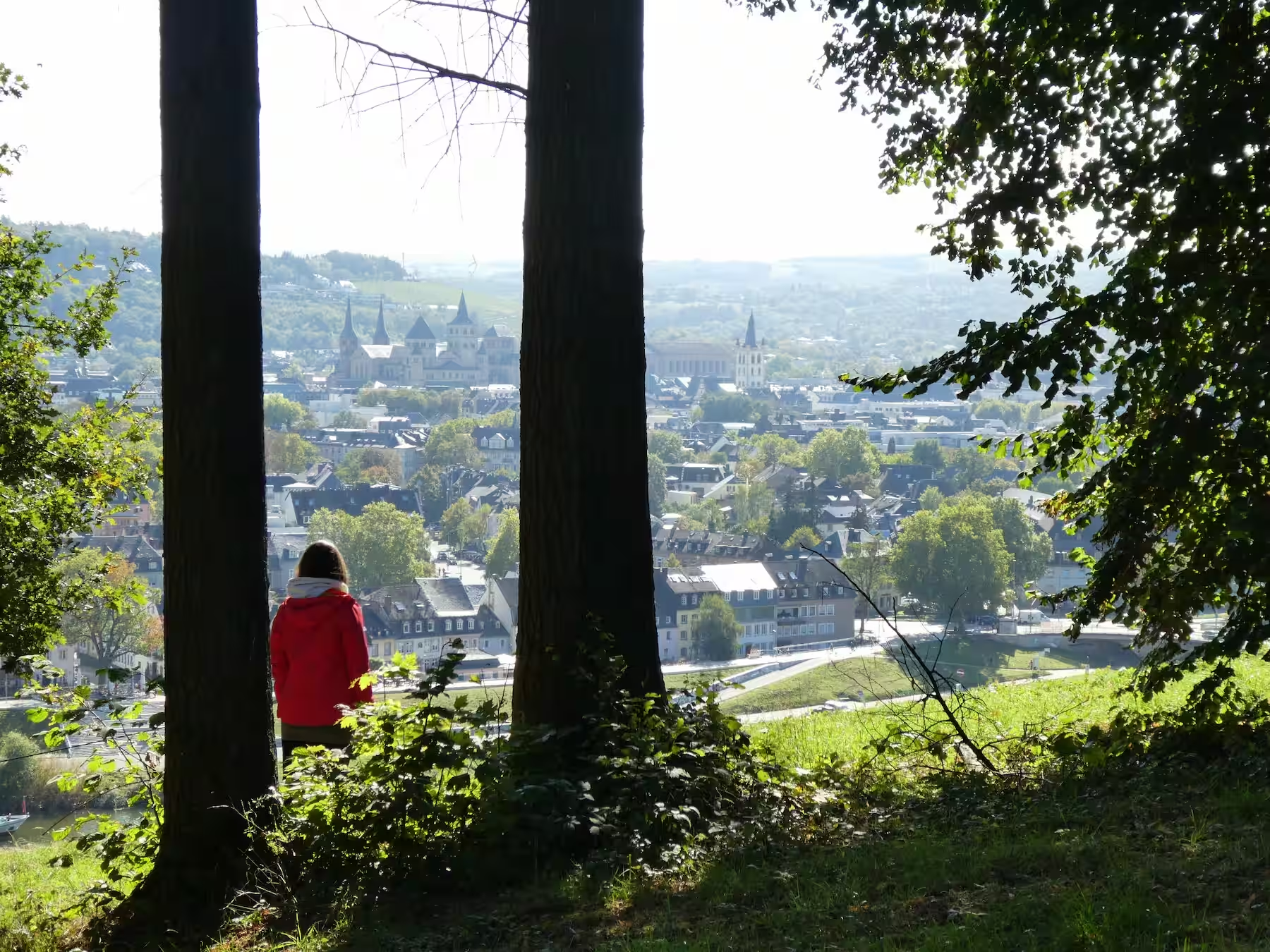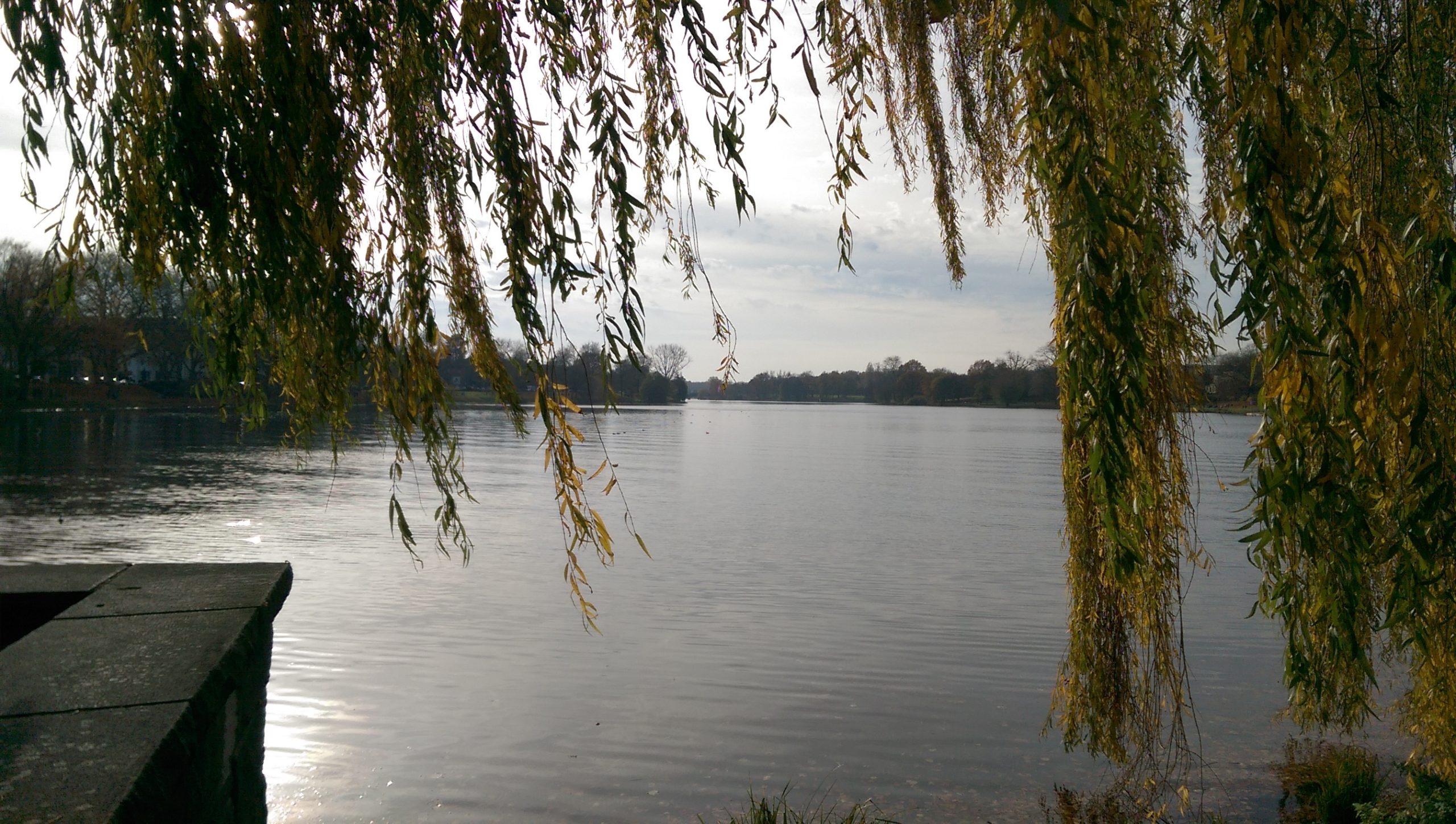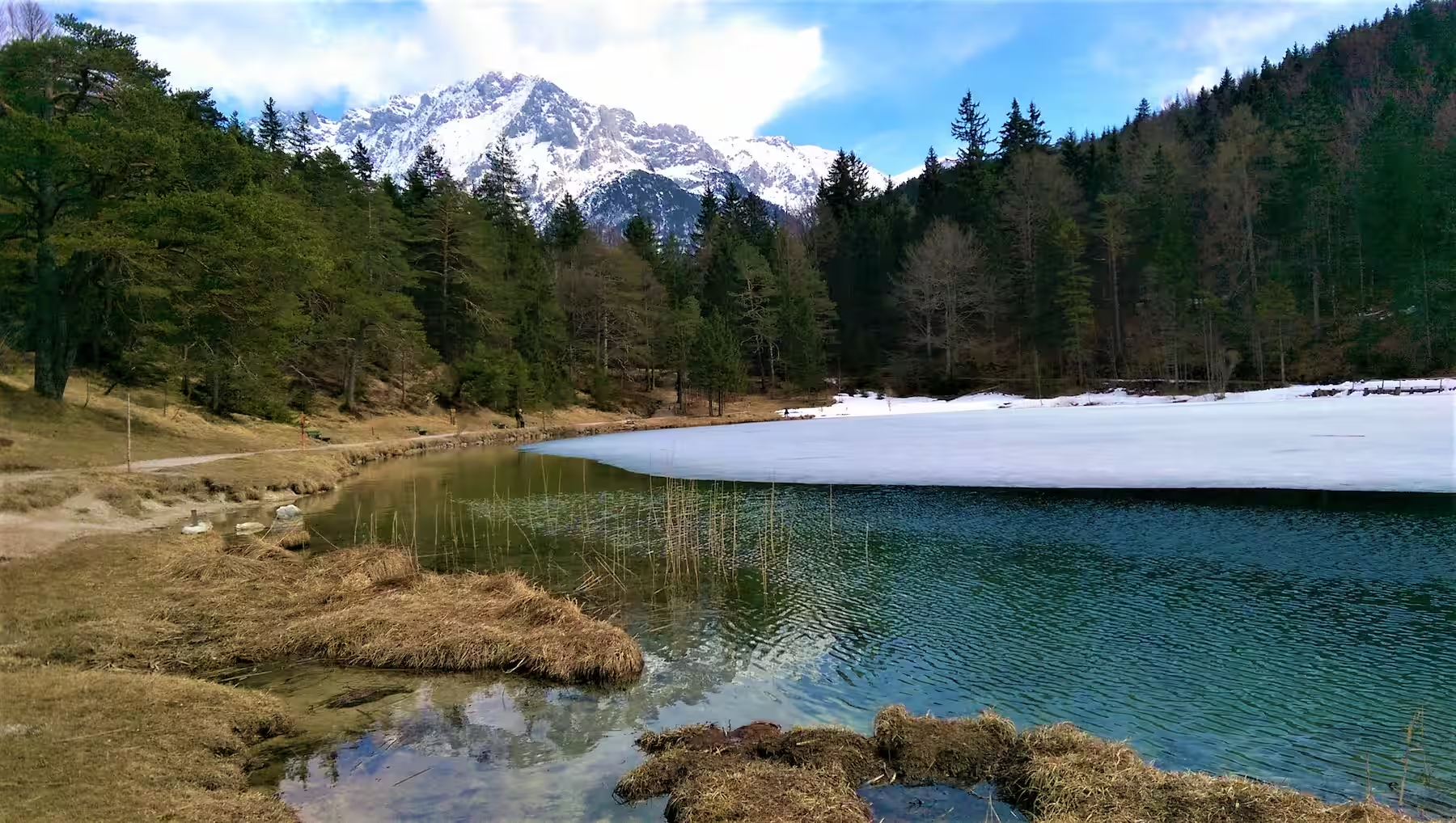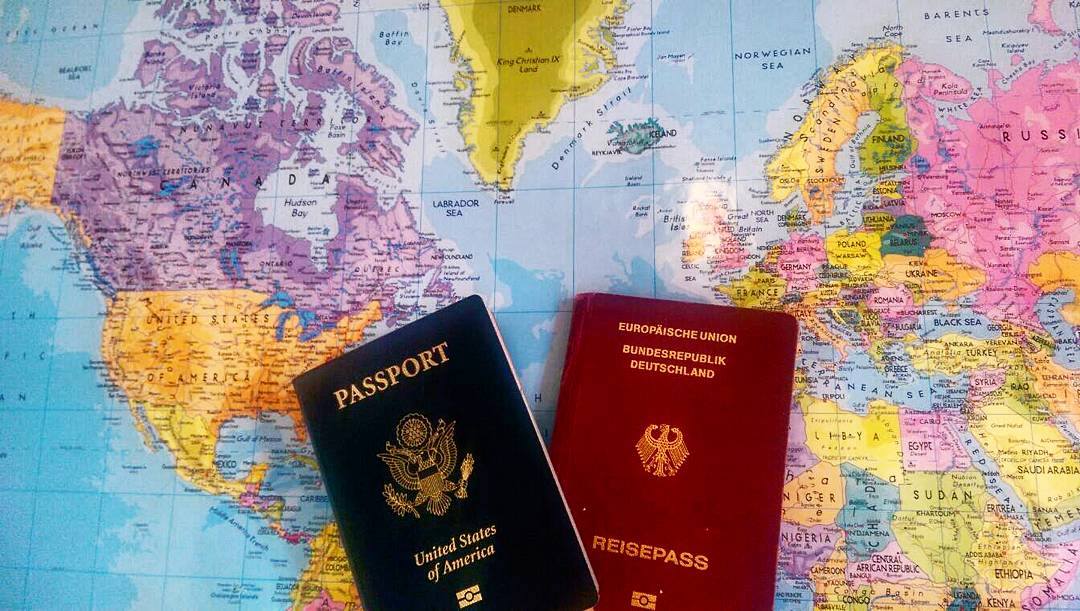Short on time? Bookmark this article or watch the short version on Instagram.
Germany never ceases to surprise us. We are constantly stumbling across new places and scenery that make us say, “how is this Germany?”. On our quest to find Germany’s hidden gems, we came across the Edelsteinland. We were already somewhat familiar with the region, but never had the opportunity to really dive in and explore this lesser-known corner of Rhineland-Palatinate. Ryne had heard about the city of Idar-Oberstein at the heart of the region because his father had visited it, when he was stationed nearby many years ago. While we knew Idar-Oberstein had a historic connection to gemstones, we had no idea just how unique and diverse the region really is. The agates and crystals are not the only hidden gems we discovered on this trip.
Edelsteinland Travel Tips in this Article
Gems, Mines & Museums
Edelsteinland (gemstone country) is aptly named, as this region has been at the heart of the German gemstone trade for centuries. Not only is this the only place in Europe where you can tour an actual gemstone mine, but it remains the center of Germany’s gemstone craftsmanship, where the centuries-old traditions of cutting, polishing and jewelry making are still practiced today.
We joined a guided tour through the historic Steinkaulenberg Gemstone Mine just outside of Idar-Oberstein and it was far more impressive than we expected. Unlike many overly polished tourist sites, this one felt incredibly authentic. The tour lasted about an hour and took us deep underground, where we walked across an underground lake and saw real gemstones still embedded in the ancient rock. Our guide was friendly, knowledgeable and taught us everything we could want to know about this mine, which has been in use since the Middle Ages.

Even if you’re not usually into geology or mining, it’s hard not to be fascinated by the natural beauty of the stones (agate, amethyst, quartz and brown jasper) gleaming from the walls. Denise, who tends to feel claustrophobic in tight spaces, actually felt quite comfortable in the wide, well-lit tunnels, which made the experience even more enjoyable.
While we didn’t make it to the Deutsches Edelsteinmuseum (German Gemstone Museum), this is another must-see for anyone interested in the art and science of gem cutting and jewelry. The museum houses an impressive collection of rough and cut stones, historical artifacts and intricately carved sculptures.
Whether you’re a gem enthusiast or just curious about what lies beneath the surface, Edelsteinland offers a rare peek into a sparkling world most people never get to see.
Hiking in Edelsteinland
If you love hiking, then you’re in the right place. The entire region is laced with well-marked trails that lead through lush forests, across rocky ridge lines and past medieval ruins. We hiked two unforgettable routes during our stay. On day 1, we did a section of the Saar-Hunsrück-Steig. Day 2 took us on a loop trail, the Traumschleife Kirschweiler Festung. We highly recommend each of these hikes!
Saar-Hunsrück-Steig: Wildenburg to Veitsrodt
We tackled a portion of the long-distance Saar-Hunsrück-Steig, starting from the Wildenburg in the Hunsrück-Hochwald National Park and hiking to the village of Veitsrodt. This section has a perfect mix of dense, shaded forest and gentle hills, which kept us cool on that warm spring afternoon. The silence of the woods was only broken by birdsong and the occasional rustling of squirrels. The 10.2 km trail was easy to follow, with clear signage and well-maintained paths, making it suitable for most fitness levels.
The Wildenburg itself is right next to a wildlife enclosure and an observation tower with sweeping panoramas of the surrounding landscape.

Traumschleife Kirschweiler Festung
Despite its name, the Kirschweiler Festung (Kirschweiler Fortress) trail doesn’t actually lead to a castle or discernible ruins. Instead, the name comes from a dramatic cluster of large, jagged rocks that crown the hilltop like the remnants of the forgotten Celtic stronghold that was once present here.
The 9.3 km route winds through peaceful, shaded forest and rewards you with occasional viewpoints that offer peeks across the rolling hills of the Hunsrück. The terrain is varied but manageable, with a mix of forest paths, stone steps and moss-covered boulders that give it a storybook feel. It’s the kind of trail that invites you to slow down, explore and enjoy the quiet beauty of nature.
The Perfect Post-Hike Meal at the Gartenwirtschaft
After a long day of hiking, there’s nothing better than kicking back with a rustic meal in the familiar atmosphere of the Gartenwirtschaft in Katzenloch. Tucked next to a small stream and a charming little waterfall, this outdoor restaurant is a cozy, relaxed spot where everything is cooked over an open flame—just like you would in your own backyard.
The sound of the waterfall and the warmth of the fire pit create a peaceful, laid-back vibe. The friendly service made the whole experience even better. The Gartenwirtschaft is the kind of place where you can linger as long as you’d like and sip a local beverage, while reliving the day’s adventure.
In terms of food, the menu features a great selection of regional specialties, all of which are flame-grilled to smoky perfection. The ethically-sourced cheese and potatoes that we ordered were no exception. We never expected a huge hunk of cheese to be so rich, flavorful and surprisingly filling. This is rustic comfort food done right.
Living History in Herrstein
Just a short drive from Kirschweiler, the village of Herrstein feels like something out of a storybook. Its cobblestone streets and beautifully preserved half-timbered houses immediately set the tone, making it easy to imagine what life here might have looked like centuries ago.

One of the highlights was getting to step inside the old city walls, where we saw the historic prison cell that once held the infamous outlaw Schinderhannes. Afterward, we visited a local blacksmith, who welcomed us into his workshop and gave us a hands-on look at the tools and techniques behind traditional blade making. His passion for the craft and for preserving regional history gave us an even greater appreciation for this area’s heritage.

We rounded out our trip with a delicious lunch at the Café an der Zehntscheune, a cozy spot with local dishes, delicious homemade cakes and a relaxed outdoor seating area.
Herrstein may be small, but it’s packed with character, charm and surprises around every corner. It’s well worth a visit if you’re in the region, especially if you’re drawn to history and small-town authenticity.

Where to Stay in Edelsteinland
We stayed at Traumweiler, a beautiful vacation rental in the village of Kirschweiler, and it truly lived up to its name—which literally means “dream hamlet.” Surrounded by greenery and offering lovely views of the rolling hills, this place struck the perfect balance between comfort and seclusion.
The apartment itself was spacious, thoughtfully furnished and designed for relaxation. Our favorite feature was the private sauna—which we made full use of after hiking in the Hunsrück forests. Nothing beats sweating it out and then stepping onto the terrace to enjoy the cool evening air.
Mornings were quiet, with birdsong and soft sunlight filtering through the windows, and we loved how close we were to both nature and the region’s main attractions. Whether you’re planning to hike, explore gemstone culture, or just recharge, Traumweiler is a fantastic base for your Edelsteinland adventure.

Edelsteinland truly surprised us. We turned what could have been a quick stop for gemstone history into a rich and varied adventure, filled with forest hikes, fire-grilled meals and stories from centuries past. Whether you’re here to hike, relax or dive into the region’s sparkling heritage, you’ll find plenty of reasons to fall in love with this quiet corner of Germany.
Be sure to visit Edelsteinland’s official tourism website for more tips and information.
